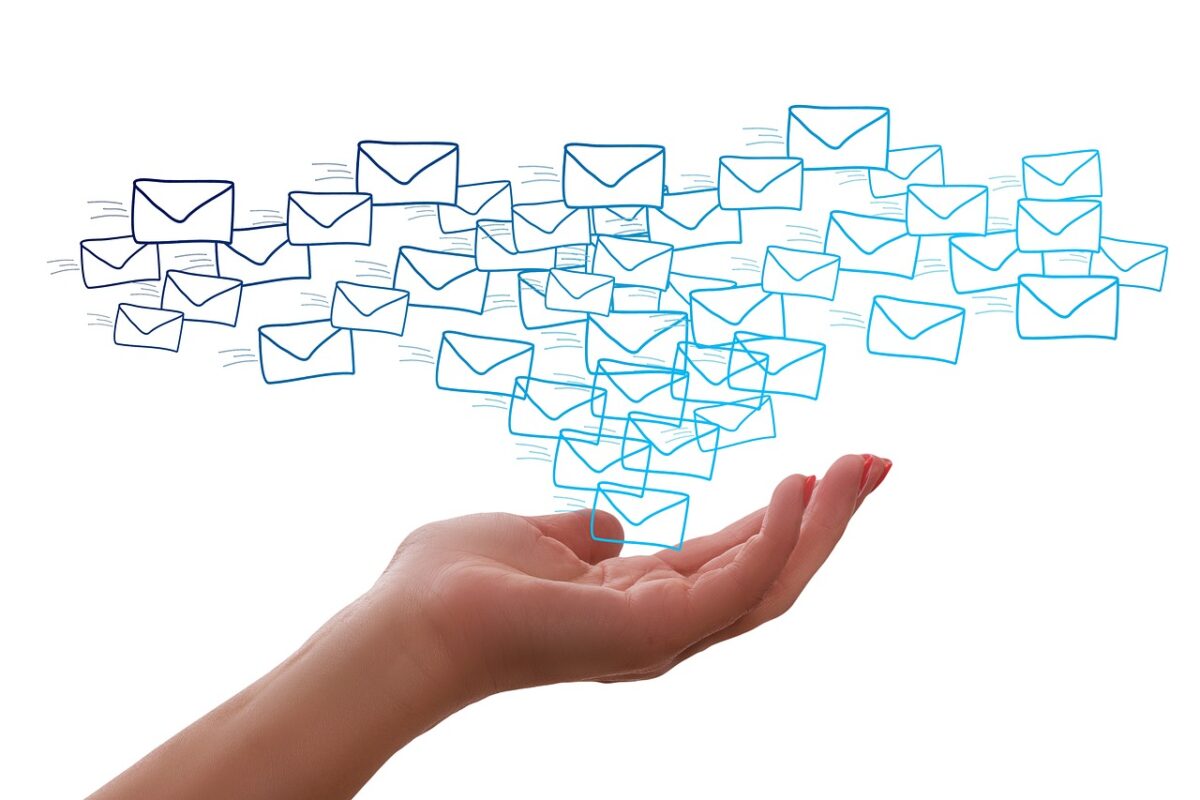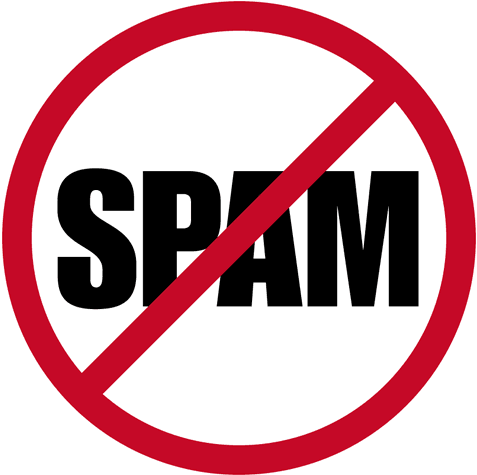IP Warm Up is the practice of progressively increasing the volume of emails sent from a new or inactive IP address over time to build trust and reputation with ESPs.
As email marketing specialists, we know that sending emails is an effective approach to interacting with consumers and achieving business results.
On the other hand, sending emails from a new or inactive IP address can be difficult. E-mail service providers (ESPs) use various algorithms to verify the validity of incoming e-mail messages, and communications from unknown or untrusted sources are more likely to be tagged as spam.
Email marketers must comply with best practices for IP Warm Up to build trust and improve email deliverability rates.
This comprehensive guide will present a detailed review of IP Warm Up, including why it’s necessary, the best practices for IP Warm Up, and how to monitor email deliverability and participation rates during the warmup phase.
This guide will provide you with essential information and ideas to help you get better results from your email campaigns, whether you’re new to email marketing or a seasoned veteran.
What is IP Warm Up?

Email marketers use IP Warm Up as a tactic to gradually build trust and reputation with email service providers (ESPs), gradually increasing the volume of emails sent from a new or inactive IP address over time.
This approach involves sending small amounts of emails at first and then progressively increasing the volume as the reputation of the IP address improves.
The purpose of IP Warm Up is to establish the credibility of a new or inactive IP address with email service providers to prevent it from being reported as spam or banned.
This is significant because email service providers employ different methods to detect spam and may be more inclined to designate e-mail as spam if they receive a large volume of messages from an unknown sender.
The length of the IP Warm Up period varies depending on the volume and reputation of the sender but typically lasts from several weeks to several months.
It’s critical to regularly monitor email deliverability and participation rates during the preparation phase to verify that the IP address is not marked as spam or has other delivery difficulties.
Why is IP Warm Up Important?
IP Warm Up is crucial for a variety of reasons.
To begin with, it helps establish a favorable reputation with email service providers for a new or inactive IP address (ESP). ESPs use various methods to verify the validity of incoming e-mail messages, and communications from unknown or untrusted sources are more likely to be flagged as spam.
The IP Warm Up procedure helps develop trust with ESPs by gradually increasing the volume of emails sent over time, which reduces the risk of being identified as spam or banned.
Secondly, IP Warm Up can help increase email deliverability rates. When the reputation of the IP address improves, ESPs are more likely to trust it, and its messages are more likely to be delivered to the inbox instead of being filtered into the spam folder or banned altogether.
Finally, this warmup process can help increase email participation rates. Marketers can better assess how their subscribers react to their communications and modify their approach by progressively increasing the volume of emails delivered. Over time, this can help increase open rates, click-through rates, and other critical performance metrics.
Marketers can improve the effectiveness of their e-mail campaigns and obtain better results by following the best practices for IP Warm Up.
What is the Impact of IP Warm Up on Our Reputation?

Impact of IP Warm Up influences on reputation. When sending emails from a new or inactive IP address, IP Warm Up is a tactic used to build trust and reputation with email service providers (ESPs).
Gradual increase in email volume over time helps the sender gain a reputation with ESPs, which reduces the risk of being detected as spam or blacklisted.
Marketers can preserve their reputation and increase the chance of their emails reaching the inbox by following best practices for IP Warm Up.
This is important because restoring the trust and reputation required for effective email delivery can be difficult if an ESP detects an IP address as spam or blacklisted.
On the other hand, not following the IP Warm Up procedure correctly can negatively influence reputation. Sending too many e-mails quickly can trigger spam filters and cause the IP address to be marked as spam, damaging the reputation and affecting future email campaigns.
It’s also critical to monitor e-mail participation rates during the warm-up phase. If subscribers do not open emails, it may imply that they aren’t interested in the content, which can damage the sender’s reputation and future email efforts.
How to Apply for IP Warm Up?
To Apply for IP Warm Up requires careful preparation and execution. The following steps should be taken for an effective IP Warm Up:
- Increase the sending volume gradually: As your IP address gains notoriety and trust with ESPs, increase your sending volume gradually. This can help prevent your emails from being marked as junk and increase deliverability.
- Identify your engaged subscribers: Prioritize sending to your engaged subscribers during the preparation time. Subscribers who recently opened or clicked on your emails made a transaction or performed other activities can be included.
- Try to keep an eye on your email participation rates: During the preparation time, check your email participation rates. If your interaction rates are low, it could mean that your emails are not reaching users or that your email plan needs to be changed.
- Continue to monitor your email performance: After your preparation time is over, you should continue to monitor your email’s deliverability and interaction rates. Maintain a good image with ESPs by reviewing your email lists regularly and removing inactive or unengaged users.
Practices for Implementing IP Warm Up

Currently, there are a number of very common and recommended practices that can help you implement IP Warm Up at your address. Here are some of the most important and relevant ones.
Respect sending limits
Knowing your email sending limits is essential because it can help you avoid being flagged as spam or having your email service provider stop or block your account (ESP).
Most ESPs have email sending limits per day or hour to prevent spam and maintain the network’s reputation. If you exceed these limits, your e-mail account may be blocked or stopped momentarily or forever, making it difficult or impossible to send further e-mails.
Here are some examples of the sending limits depending on the email provider:
- Gmail: 500 (per day)
- Google Workspace: 2000 (per day)
- Outlook: 300 (per day)
- GoDaddy: 250 (per day)
- Zoho (free): 50 (per day)
- Zoho (paid): 300 (per day)
- Yahoo!: 500 (per day)
- Yandex: 500 (per day)
- BlueHost: 150 (per hour)
- DreamHost: 100 (per hour)
- SendGrid (free): 100 (per day)
- SendGrid (pro): 1.5 million (per month)
Avoid Spam
Avoiding spam is essential to maintaining a positive online image, building trust with your audience, and meeting your marketing objectives. Spam is an unsolicited or unwanted e-mail sent in large quantities, often to people who haven’t been permitted to receive it.

Sending unsolicited e-mails may violate anti-spam laws, which may result in fines, legal action, or damage to the company’s image. It’s illegal in some nations to send unsolicited e-mails without the recipient’s permission.
If you send unwanted e-mails, e-mail service providers (ESPs) may mark them as junk or ban your e-mail address, which reduces your e-mail delivery rates. As a result, your genuine emails may be routed to the spam folder or banned altogether, limiting your ability to communicate with your target audience.
Spam can damage your brand image and undermine your audience’s trust in your company. People are more likely to respond to emails from companies they trust that contain useful and relevant information.
If your emails are marked as spam, users may choose to unsubscribe or label them as junk, which reduces your subscriber base and interaction rates. Maintaining high participation rates is critical to the success of your email marketing efforts.
To avoid spam in emails sent by yourself, avoid using subjects or headers that are generally identified as spam. For example, the recipient generally marks a subject with the title “FREE, ENTER NOW” or “75% OFF, BUY!” as spam.
Follow an IP Warm Up Schedule
The IP Warm Up schedule will differ depending on your email service provider (ESP) and the number of emails you wish to send. However, here is a standard IP Warm Up plan for your convenience:
Week 1:
- Day 1: Send emails to the most engaged users, such as those who recently interacted with your emails, purchased something, or subscribed to your list.
- Day 2: Double the sending frequency from Day 1 and target your most engaged users.
- Day 3: double your mailing production from day 2 and continue to target your most engaged users.
- Day 4: Double your mailing production from day 3 and start including some less engaged subscribers, such as those who haven’t opened or clicked on your emails in the past few weeks.
Week 2:
- Day 1: Double your mailing production from the previous week’s last day and continue targeting active and less engaged subscribers.
- Day 2: Double your mailing production from day 1 and continue to target active and less engaged subscribers.
- Day 3: Double your mailing production from the previous day and continue to target active and less engaged subscribers.
- Day 4: Increase mailing production by 50% over the previous day and continue to target active and less engaged users.
Week 3:
- Day 1: Increase mailing production by 25% compared to the previous week’s last day and continue targeting active and less engaged users.
- Day 2: Double your mailing production from day 1 and continue to target active and less engaged subscribers.
- Day 3: Increase sending performance by 25% over the previous day and continue to target active and less engaged users.
- Day 4: Increase mailing throughput by 25% over the previous day and continue with the same approach.
After week 3, you can progressively increase your sending volume and continue to target engaged and less engaged users, but you must carefully watch email delivery and participation rates to maintain a good sender image.
Switch to a Dedicated IP
If you’re still using a shared IP, it’s time to change that. When it comes to email marketing, there are several important variations between a shared IP and a dedicated IP.
When you use a common IP, the deliverability of your email is affected by the image of all senders using that IP. This means that if any of these senders are involved in spam or malicious email practices, the IP image and, as a result, the deliverability of your email will be affected.
With a dedicated IP, you can modify and optimize your email delivery practices to meet particular business requirements. You can set your own sending volume, regularity, and content without worrying about how it’ll affect other senders sharing the same IP address.
Dedicated IP addresses have the potential to improve deliverability rates because they provide a greater degree of control over email transmission practices. However, this depends on maintaining a good IP image, which can be difficult to achieve and requires continuous monitoring and management.
You may have less control over the deliverability of your email when using a shared IP because it’s affected by the behaviors of other senders sharing the same IP.
Dedicated IP addresses are more expensive than shared IP addresses because they require more infrastructure and resources to manage. If your email traffic is minimal, the expense of a dedicated IP may outweigh the benefits. In these situations, a common IP address may be more cost-effective.
Use Warmup Tools
During the IP Warm Up procedure, the use of warmup tools can be advantageous for several reasons.
Warmup tools can help automate the IP Warm Up procedure, saving you time and effort. These tools can autonomously schedule and modify email delivery volume and frequency depending on your preferred warm-up plan and email participation data.
In addition, warmup tools can assist in optimizing the warmup process by evaluating email interaction metrics, such as open rates and click-through rates, and adjusting emailing practices accordingly.
The warmup tools can be highly customizable, allowing you to customize the warmup procedure according to your particular requirements and tastes. You can customize your warm-up goals and objectives, set your own routine, and change your sending practices.
Finally, these warmup tools can monitor and report on your email performance in real-time, which allows you to track progress and detect any problems that may arise during the warm-up process.
Implement Email Authentication
Implementing email authentication during the IP Warm Up procedure is critical to establishing a good email image and maximizing email deliverability. The next two steps are essential for setting up e-mail authentication:
- SPF, DKIM, and DMARC record settings: These three methods of email verification work together to ensure that your email is genuine and not forged or fraudulent. SPF (Sender Policy Framework) verifies the IP address of the sender, DKIM (DomainKeys Identified Mail) adds a digital signature to the email to confirm its authenticity, and DMARC (Domain-based Message Authentication, Reporting, and Conformance) specifies how to handle emails that fail SPF and DKIM checks.
- DNS records configuration: To implement these authentication methods, you need to organize your DNS (Domain Name System) records to include the necessary SPF, DKIM, and DMARC information. This involves adding TXT entries containing the required verification information to your DNS zone file.
What does it Mean to Warm Up a Domain?
The process of progressively increasing email-sending traffic from a new or inactive domain to create a good email-sending image and to increase email deliverability is known as Domain warmup.
When a domain is first used to send e-mails, it’s not well known among e-mail providers, which can lead to e-mails being reported as spam or banned altogether.
Warm Up a Domain generally involves progressively increasing the volume of emails sent from the domain over time while tracking key metrics such as email delivery rates, bounce rates, and spam complaints.
The goal is to build a good image with email providers by showing that the site is a genuine email sender and that the emails sent are of high quality and importance.
Domain warmup details may differ depending on variables such as the number and participation of the email list, the type of material sent, and the email service provider used.
However, the general rule is to start cautiously and steadily increasing the volume of e-mails sent while monitoring data and changing the readiness strategy as needed to ensure optimal email deliverability.
How to Warm Up a Domain?
Here are some methods to warm up a domain:
- Start with a low email volume: When you start sending emails from a new domain, start with a low volume and progressively increase the volume over time. This will help you establish a good sending image with email companies.
- Segment your email lists: Divide your email lists into small groups and deliver emails to each group over time. This allows you to view and manage email delivery.
- Send relevant and engaging content: To avoid being tagged as spam, send relevant and engaging content to your email subscribers.
- Monitor email deliverability: Track email delivery rates, bounce rates, and spam reports. These measures will help you understand your domain image and improve your emailing practices.
- Gradually increase email volume: To avoid overwhelming email providers and being tagged as spam, gradually increase email volume over time.
- Maintain a consistent mailing schedule: To develop trust and a good mailing image, try to maintain a consistent mailing schedule.
- Verify your email address: With SPF, DKIM, and DMARC, you can help email providers validate that emails are genuine.
Frequently Asked Questions
The duration of the IP warm-up process can vary depending on several factors, including the sender’s reputation, sending volume, and engagement rates.
Conducting IP warm up for multiple IPs simultaneously is generally not recommended. Each IP address has its own sender reputation and warm-up process, and attempting to warm up multiple IPs at once can lead to several challenges and potential issues.
IP warm-up is not a one-time process; it is a recurring practice that may need to be repeated under certain circumstances. The need for repeating the IP warm-up depends on various factors, including your sending habits, email volume, sender reputation, and any significant changes to your email program.

